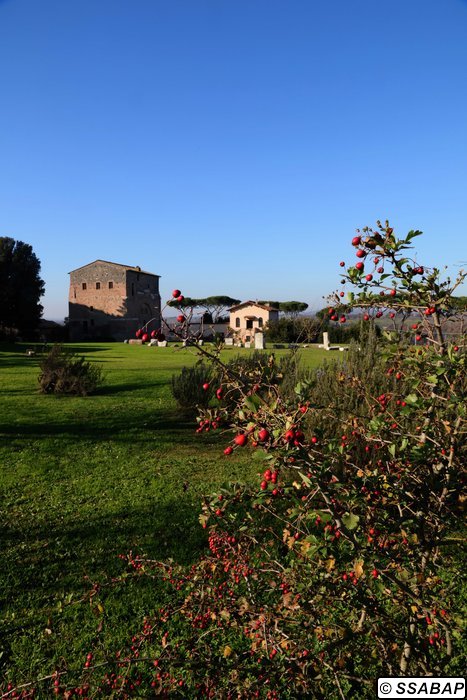
Arch of Malborghetto

Arch of Malborghetto
Just past the 13th milestone of the Ancient Flaminian Way, rises the imposing mass of the hamlet of Malborghetto.
The building has incorporated a four-fronted arch of the 4th century CE, placed as a marker at the intersection of the Via Flaminia and a link road between the Via Tiberina and Veii.
This tetrapylon, of a rectangular plan on four pylons of brick, was topped by a flat-roofed attic.
The presence of an honorary arch on the Flaminian Way, dateable to the 4th century CE, has been ascribed to the fact that the troops of Constantine descended from the north along this very road in order to oppose those of the Emperor Maxentius.
Christian tradition has it that Constantine, having encamped in this place, saw in the sky at sunset the sign of the cross and "in his sleep is warned to mark the shields with the heavenly sign of God and to give battle." The next day, 28 October 312, at Saxa Rubra, Constantine routed the army of his rival, Maxentius, who himself perished in the waters of the Tiber. Following this victory, in 315 the Roman Senate ordered the erection of the bifrontal arch near the Colosseum in the Urbs (City) and, perhaps, the erection of the four-fronted one at Malborghetto, in the Suburbium (Environs).
Over time the arch has undergone several transformations, both structural and functional.
In the 11th century it became a fortified church dedicated to the Virgin and in the 13th century was inserted into the girdle wall of a castrum, named by the sources Burgus S.Nicolai de Arcu Virginis (Hamlet of S.Nicholas of the Arch of the Virgin)
Being part of the defences of the Papal States until the 15th c., it was destroyed during the fights between the Orsini and the Sacrofanese families. Transformed into a farm-house and surrounded by the ruins of the hamlet, from that moment it took the name of Malborghetto or Borghettaccio. In 1567 the building was restored by the Milanese aromatarius (apothecary ) Constantino Petrasanta and then, in the 18th century, adapted as a staging post for mail.
It retained this function until the pontificate of Pius VI who, by connecting Civita Castellana to the Via Cassia, abolished the postal service along the suburban stretch of the Flaminian Way. Returned to being a simple farmhouse, only in 1982 did it become part of the State Property Administration
After a careful restoration now it houses an Antiquarium with findings pertinent to the Flaminian Way.













